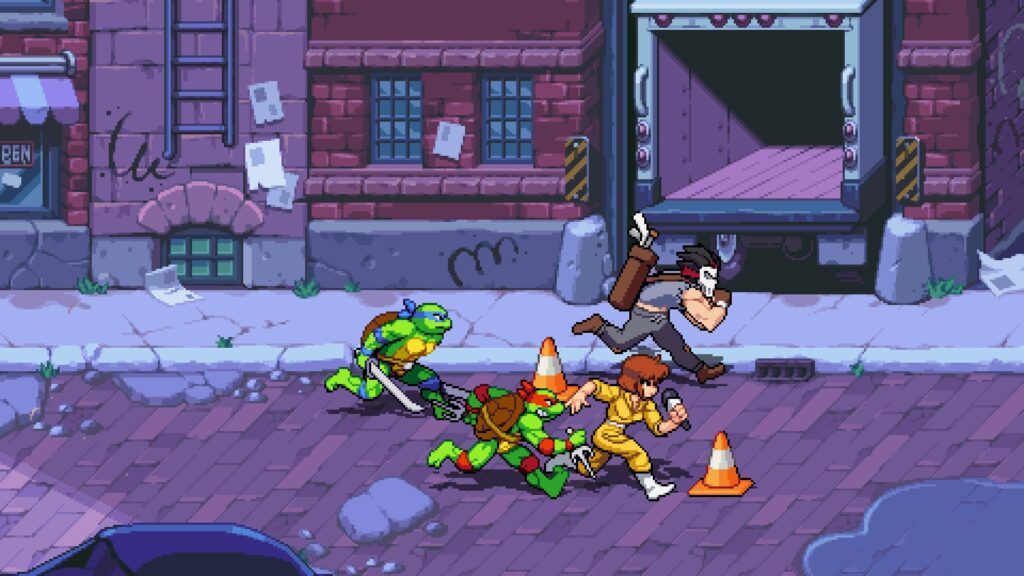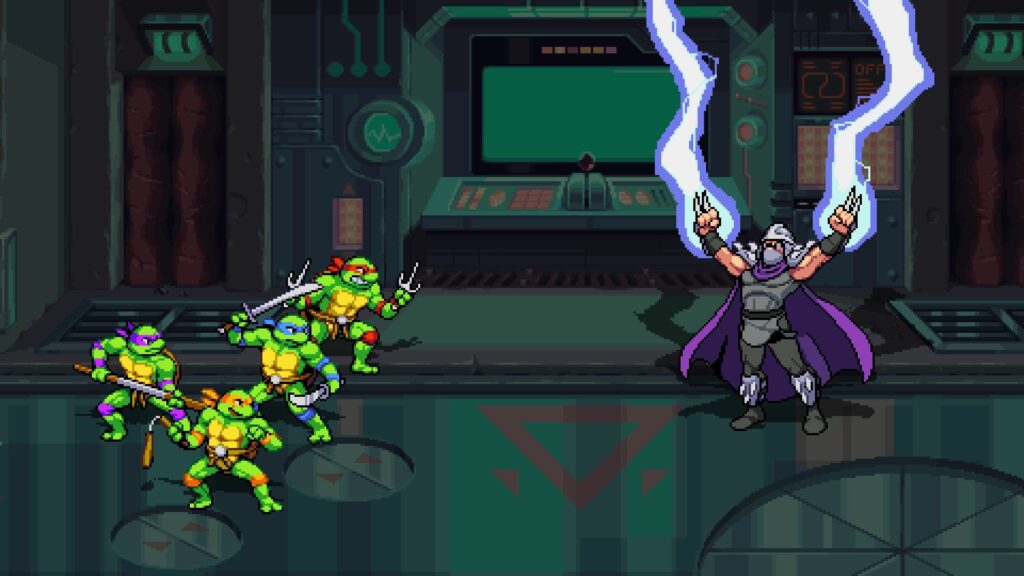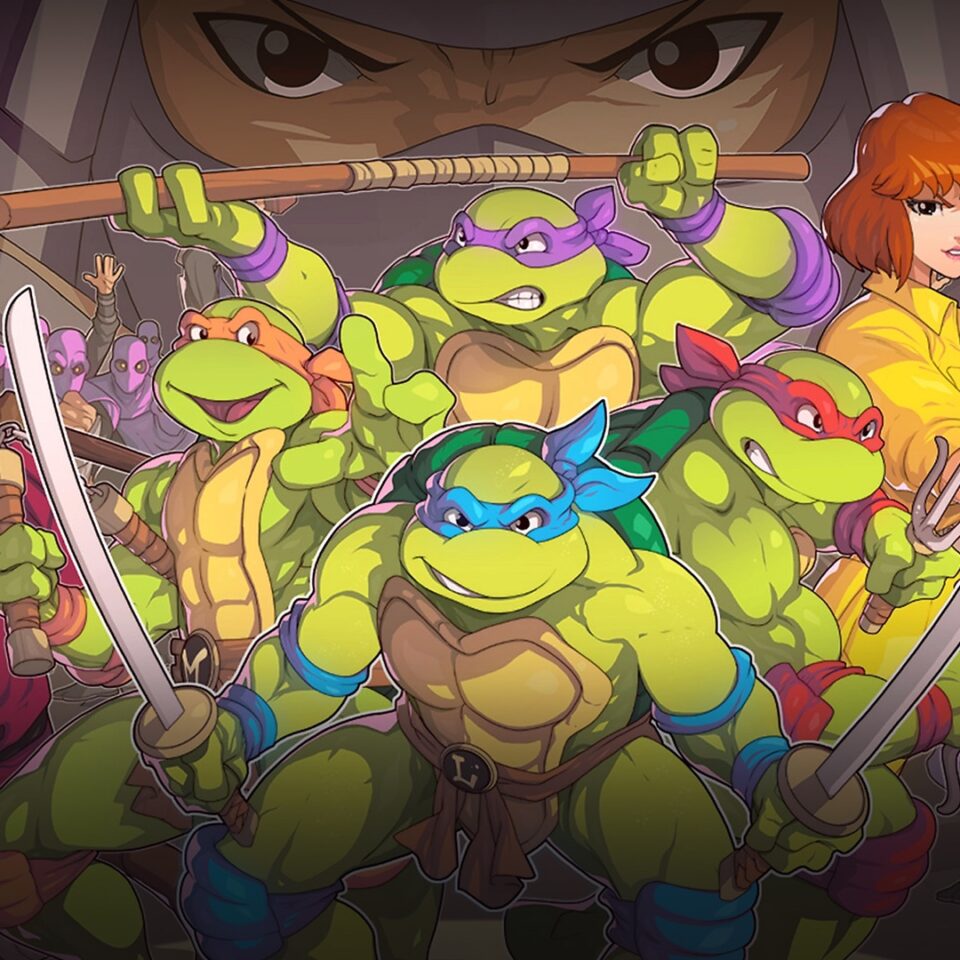At GDC 2023, Tribute Games revealed how Teenage Mutant Ninja Turtles: Shredder’s Revenge is inspired by the past, not constrained by it.
Attempting to improve upon a beloved classic is a risky proposition; even more so when that classic is also based on an equally beloved pop-culture franchise.
Montreal-based studio Tribute Games wanted to do exactly that by making a new Teenage Mutant Ninja Turtles side-scrolling beat ’em up inspired by Konami’s 1989 arcade classic. The result was Teenage Mutant Ninja Turtles: Shredder’s Revenge, which was released last summer to wide acclaim.
In an insightful talk at GDC, Frederic Gemus, game designer at Tribute Games, revealed how Teenage Mutant Ninja Turtles: Shredder’s Revenge was designed to evoke the feel of the original classic but also evolve the side-scrolling beat ’em up formula for modern audiences.

Shredder’s Revenge is widely regarded as a sequel to Konami’s run of iconic TMNT games. However, Gemus is keen to state that there is no direct relation, and that the game is more accurately described as a spiritual follow-up. Nonetheless, those early Konami games provide the foundation for the half-shelled heroes’ return.
“Looking at the legacy of the previous titles was the obvious starting point,” says Gemus. “They are fondly remembered for their exciting multiplayer gameplay, polished visuals, and for containing content from the TV show.”
However, making a nostalgia-fuelled action game resonate with a modern audience requires more than HD visuals and some new sprites. Gemus says the team at Tribute wanted to understand the fundamental elements that made the original game a success.
“To understand the core of the original games and what made them such timeless classics, you need to dive deeper than ‘what the player remembers’ and use your knowledge of game design,” says Gemus. “You also need to carefully choose which features are part of that core and which can be left behind. You don’t want to redo the originals – you want to adapt them to modern gaming standards.”
New features should be identified, Gemus says, but only if they improve the core experience. He recalls the words of studio founder Jean-Francois Major early in production: “Make sure the game plays like how you remember, not how it was.”
Which begs the obvious question: what do people remember about the classic Teenage Mutant Ninja Turtles games? And is that recollection accurate?

From a gameplay perspective, the Teenage Mutant Ninja Turtles: The Cowabunga Collection helps answer that question. The best games in the retrospective stand up to scrutiny, but it’s also clear that they are a product of another era, both in terms of game design and the technical limitations of the time.
“One of the strongest memories is, of course, the four-player multiplayer experience. Then, the visuals, which were closer to the cartoon than any other video game of the time,” Gemus says. “The game also had non-stop action, exciting stage setups with skateboard sections, and even time travel. More importantly, it felt like an authentic TMNT experience on par with the show. What’s less remembered is how the games were coin-op arcade games and built to generate as many quarters as possible. They also featured a limited range of abilities, and some repetitions, especially in free play.”
The home console ports were just as popular, if not more so, says Gemus. But technical limitations – including limited colour palates, sprite flickering, and slow down – degraded the experience.
“So it was easy,” jokes Gemus. “Just take what players remember from the older titles, and simply avoid doing the bad things people forgot about.”
The development team studied what made the originals work, above and beyond being based on a popular IP. They analysed the core gameplay loop and tried to discover the core ingredients of the game that kept players engaged.
“In the case of TMNT, we always felt that even though the arcade games were impressive, the console ports – especially the NES version – provided a clearer picture of what made the game great,” says Gemus. “First, the common aspect of the NES and arcade versions is the enemy design. Enemies are made to be dealt with quickly and as soon as they enter the screen. The gameplay focuses on crowd control and how fast you can dispose of these enemies as they enter the arena.”
“You also need to carefully choose which features are part of that core and which can be left behind. You don’t want to redo the originals – you want to adapt them to modern gaming standards.”
It was soon apparent that the gameplay of the home console version was designed for longer sessions than the arcade original. There are fewer enemies on screen, but they are more aggressive and spawn more often. This results in more pressure on the player and replicates the swarming feeling of the arcade game.
“It also provides better control of the game balancing as there is obviously no need to get rid of the player after five minutes,” says Gemus. “Giving some breathing time to the players and presenting more opportunities for designers to come up with more challenges.”
“We noticed that combat encounters almost felt like classic shoot ’em games such as Gradius or R-Type where spawning choreography directly impacts the players positioning and action.”
These elements directly influence the experience, even though they are not as commonly mentioned when fans talk about the original games. This, says Gemus, is the game’s simple recipe.
“A simple, jump-in beat ’em up game that feels fair, where enemies are quick to defeat, and in which the way enemies enter the fight is more important than how they actually fight.”

It was also important to make the game easy to understand for newcomers but engaging for experienced players. The starting point was to retain the same two-button foundation – for jump and attack – used in the arcade original, as it allows players to join the action quickly with a minimal learning curve.
“We decided to separate the special attacks to their own buttons in order to avoid player mistakes while button mashing. And we added an extra dodge button for more balanced combat strategies,” Gemus explains. “All of these actions can be combined either successively or simultaneously for different outcomes that are clear to the players as they explore the controls.”
Each character was also designed to play the same way with the same inputs, although the actions have different outcomes. Michelangelo, for example, can bounce on enemies after attacking, while Raphael can do a suplex instead of a standard throw. This allows players to mix and match characters without relearning the control scheme.
“Finally, we wanted to counter some of the more common development flaws by locking the enemies on screen, and making the edges of the camera act as collisions,” says Gemus.
This prevents the expulsion of enemies from the play area, which, in the original, resulted in downtime as players waited for their return.
In terms of level design, Gemus says that keeping the duration of each stage under ten minutes, including a boss encounter, was the sweet spot for player engagement. And in addition to making the experience accessible and varied, expert players and speed-runners were also taken into consideration.
“We decided to build each stage with a golden path in mind,” says Gemus. “If a player positions themselves correctly, and performs the right action at the right time, they can basically complete each stage to perfection.”

Although TMNT games are commonly associated with local multiplayer, an online-first approach was taken during development to make sure lag and replication problems were minimised.
“For a small team like ours, it forced us to make sure that every feature’s first iteration was always multiplayer-ready. This meant a lot more development time but a more stable overall experience as we went along,” says Gemus.
“We knew the nature of the game would make it very hard to perfectly replicate everything happening on screen for every player. So we decided to focus on each player’s experience. If you are attacking an enemy, this enemy will be replicated perfectly on your machine, but it might be a bit off on the other player’s side. The player’s focus dictated the priorities of replication, and even though you might spot inaccuracies, each player’s gameplay experience is always solid and enjoyable, especially when six players are creating pure chaos on screen.”
With more than a million copies sold, a Metacritic score in the mid-80s, and inclusion on Game Pass and PS Plus, Teenage Mutant Ninja Turtles: Shredder’s Revenge appears to have comfortably achieved Tribute’s goals.
Gemus attributes the game’s success to the dedication and commitment of the development team, the support of publisher Dotemu, and most importantly, the philosophy to “make the game play just like you remember”.






